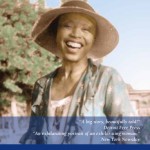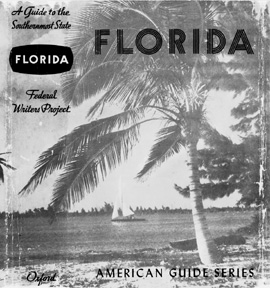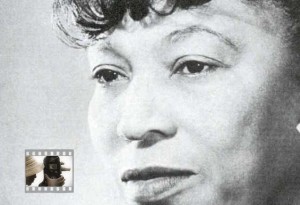Apr
26
2010
Please note this “event” has passed.
Gotta have your Zora? Get her on the Online. 
Here are some links to catch the award-winning PBS’ American Masters film, produced and written by Kristy Andersen (yours truly):
California Newsreel, the film’s educational distributor, is offering a sneak preview for those schools who have dallied and still have some money in the coffers at the end of the school year to buy a copy. Just follow the link.
Other fans have linked and are offering a chance to view on their pages:
ThisBlkSistasPage
MaxReddick/topsy
Msinklination
no comments | posted in About Filmmaking, Jump At The Sun Screenings, Zora Neale Hurston
Apr
22
2010
Frederick Douglas Opie writes gloriously in his Hog and Hominy blog and treats us to wonderful recipes and edible eye candy. Fred is a scholar studying, among other things, African-American cookery in Their Eyes Were Watching God. I never knew there was so much to say about molasses. And now Fred is making me hooongry (that’s what one woman in Zora’s Eatonville Anthology would growl to get freebies from the local butcher).
Hog and Hominy blog and treats us to wonderful recipes and edible eye candy. Fred is a scholar studying, among other things, African-American cookery in Their Eyes Were Watching God. I never knew there was so much to say about molasses. And now Fred is making me hooongry (that’s what one woman in Zora’s Eatonville Anthology would growl to get freebies from the local butcher).
no comments | posted in Interesting Posts, Zora Neale Hurston
Apr
17
2010
There’s another tourist-discovers-Zora  article, this one in the Washington Post. The reporter focuses on Zora’s work for the WPA Florida Guide and visits Eatonville, the first incorporated all-black town in the country, and one of the places mentioned in the Guide. The Guide does not have any writer attributions but Zora assuredly wrote the article about her hometown (her personally typed articles are archived at the University of South Florida in Tampa). The reporter also visits the town of Cassadaga, a tiny place where future-seers hang signs on their mailboxes advertising their prophetic services, mostly based on palm-readings (available at a price). In a quandry as to whether Zora was the WPA worker who wrote the article about Cassadaga, the reporter needs to transplant herself into the past. If Zora had showed up in Cassadaga in 1938 snooping around, knocking at the doors of the town mediums, her future would have been a swift kick out of town. Segregation was still the law and blacks were not welcome. Zora’s work for the WPA Guide was relegated to “black” topics, which included conjure men and root doctors but not white spiritualists and mediums. But today, things are different in Cassadaga, where the spirit of brotherly love embraces money no matter the race of its owner.
article, this one in the Washington Post. The reporter focuses on Zora’s work for the WPA Florida Guide and visits Eatonville, the first incorporated all-black town in the country, and one of the places mentioned in the Guide. The Guide does not have any writer attributions but Zora assuredly wrote the article about her hometown (her personally typed articles are archived at the University of South Florida in Tampa). The reporter also visits the town of Cassadaga, a tiny place where future-seers hang signs on their mailboxes advertising their prophetic services, mostly based on palm-readings (available at a price). In a quandry as to whether Zora was the WPA worker who wrote the article about Cassadaga, the reporter needs to transplant herself into the past. If Zora had showed up in Cassadaga in 1938 snooping around, knocking at the doors of the town mediums, her future would have been a swift kick out of town. Segregation was still the law and blacks were not welcome. Zora’s work for the WPA Guide was relegated to “black” topics, which included conjure men and root doctors but not white spiritualists and mediums. But today, things are different in Cassadaga, where the spirit of brotherly love embraces money no matter the race of its owner.
no comments | posted in Interesting Posts, Zora Neale Hurston
Apr
2
2010
It’s that time of the year when thoughts turn to escape! Getting out of the cold. Getting away from the reality of harsher places. Time to head south from north, or across the country to palm trees and beaches.
A how-to article on following Zora’s Florida roust-abouts just found some space in the New York Times.
And if that doesn’t satisfy your wanderlust, buy a copy of my film Jump at the Sun for the real story.
no comments | posted in Interesting Posts, Zora Neale Hurston
Mar
31
2010
Zora Neale Hurston’s name is almost synonymous with the Harlem Renaissance. Yet, she spent only a modest amount of her time in Harlem during the decade it flourished as an incubator for black arts in America, from 1920 until the stock market crashed in 1929, launching the Great Depression.
 Zora arrived in New York in 1925 and in 1927 she was given a 16-mm camera and a car by her patron Charlotte Osgood Mason, and immediately headed south to Florida. A majority of the footage from 1927 consists of children playing games. Researcher Keith Bollum has identified the location as Loughman, Florida, the site of an immense central Florida lumber yard and sawmill, the same place where Zora gathered stories for her anthropological collection Mules and Men. Other footage appears to be Bartow where she documented a medical “root doctor” whom she also wrote about in Mules and Men. She side-tracked to Mobile Alabama, interviewing and filming Cudjo Lewis, the last living African to have made the Journey of the Middle Passage to America as a slave (on an illegal slave ship, as slave transport had been banned). Unfortunately, the audio didn’t survive, and neither did footage of “the Zulu Crew” from New Orleans, nor dancers on a beach (a list Mason created describing Zora’s footage is in an archive at Howard University). Because Zora’s interest was black folk culture, she shot footage at baseball bleechers in Florida, most likely one used by the Negro Leagues, and yet she filmed the average folks in the stands but not the players.
Zora arrived in New York in 1925 and in 1927 she was given a 16-mm camera and a car by her patron Charlotte Osgood Mason, and immediately headed south to Florida. A majority of the footage from 1927 consists of children playing games. Researcher Keith Bollum has identified the location as Loughman, Florida, the site of an immense central Florida lumber yard and sawmill, the same place where Zora gathered stories for her anthropological collection Mules and Men. Other footage appears to be Bartow where she documented a medical “root doctor” whom she also wrote about in Mules and Men. She side-tracked to Mobile Alabama, interviewing and filming Cudjo Lewis, the last living African to have made the Journey of the Middle Passage to America as a slave (on an illegal slave ship, as slave transport had been banned). Unfortunately, the audio didn’t survive, and neither did footage of “the Zulu Crew” from New Orleans, nor dancers on a beach (a list Mason created describing Zora’s footage is in an archive at Howard University). Because Zora’s interest was black folk culture, she shot footage at baseball bleechers in Florida, most likely one used by the Negro Leagues, and yet she filmed the average folks in the stands but not the players.
This early footage documented precisely the culture and people Zora wrote about in her books and was an important asset for my film, Jump at the Sun.
no comments | posted in About Filmmaking, Zora Neale Hurston



